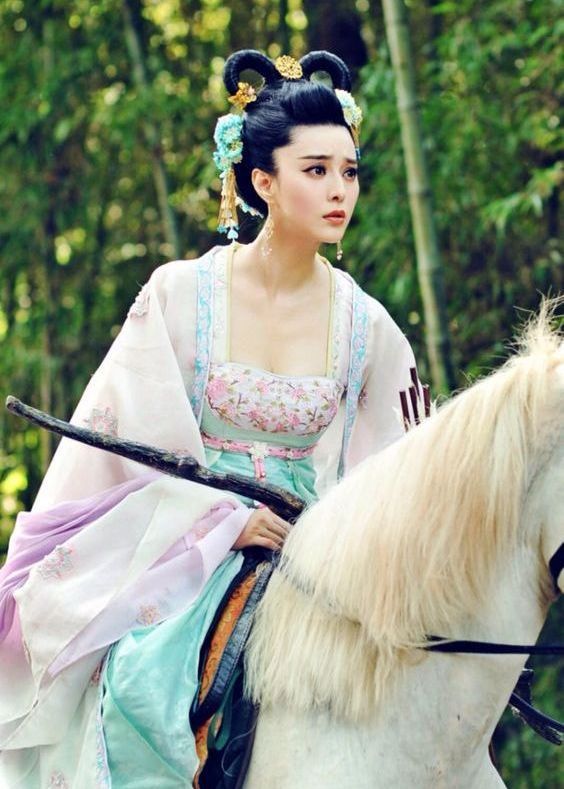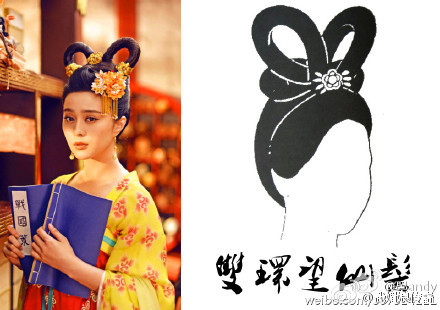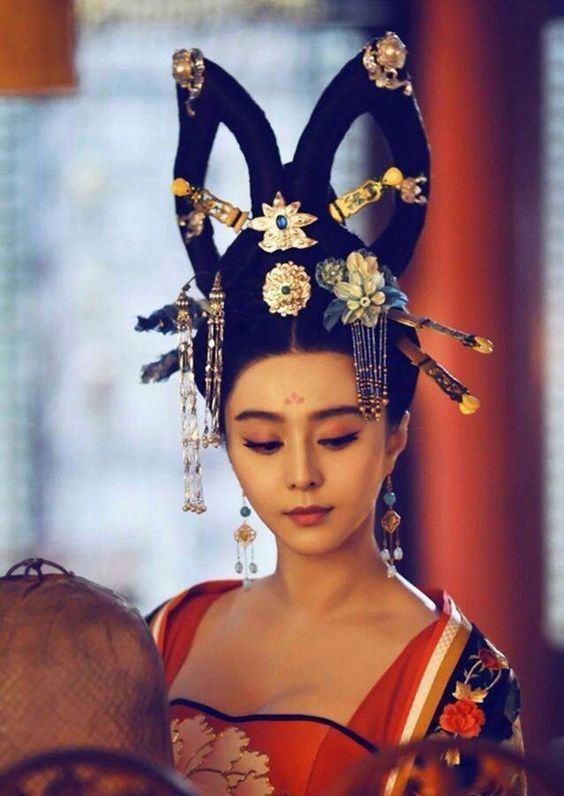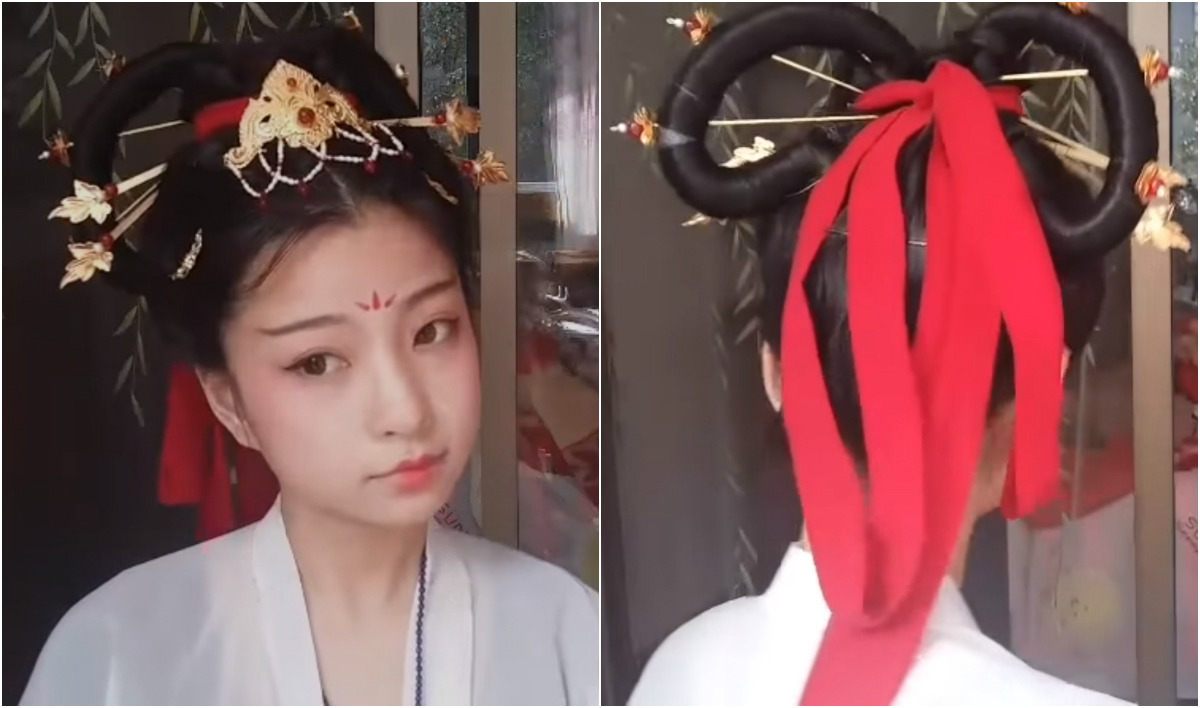Hi, thanks for the question!
These two looped hairstyles, worn by Fan Bing Bing as Wu Zetian in the Chinese drama “The Empress of China”, are unique styles with individual names. The first style is called 双环望仙髻/Shuang Huan Wang Xian Ji (Double Hooped Immortal-Seeking Ji), and the second style is called 飞仙髻/Fei Xian Ji (Flying Immortal Ji). “Ji/髻” refers to any hairstyle involving pulling hair on top of the head. Let’s take a look at each one:
1. 双环望仙髻/Shuang Huan Wang Xian Ji (Double Hooped Immortal-Seeking Ji):

For this hairstyle, the hair is split into two parts, and black yarn or ribbons are used to form hoops above the head. For the finishing touch, a small Buyao (hairpin with decorations that swing as you walk) is added to the front. The hairstyle originally developed from an earlier style called 双环髻/Shuang Huan Ji (Double Hooped Ji), which was popular among single women and court ladies during the Wei/Jin and Northern & Southern dynasties. The Double Hooped Immortal-Seeking Ji was fashionable during the Tang – Song dynasties:

2. 飞仙髻/Fei Xian Ji (Flying Immortal Ji):

This hairstyle, which consists of two tall twin loops on either side of the head, first appeared during the Han dynasty. Legend has it that during that time, the Heavenly Mother of the Jade Palace visited Emperor Wu Di. He was so astounded by the visit that he recorded the flying immortals’ hairstyle, and asked his court maidens to imitate it. The Flying Immortal Ji is thus commonly used in depictions of immortals. It was also worn by young girls, as well as being a popular hairstyle for traditional dances and performances:

To create the hairstyle, start with a high ponytail atop the head. Next, split the hair into two segments and form each into a loop, and then wrap the ends around the base of the ponytail. Use hairpins to keep the coils of hair in place, and reinforce with another hair tie as needed. Finally, decorate generously with hair accessories. Semiprecious stone pins, jade combs, and delicate ornaments of metal were popular choices of the past.
For a visual depiction of how the Flying Immortal Ji is created, there’s a helpful video tutorial here:
The back is just as beautiful as the front!

Hope this helps!


















